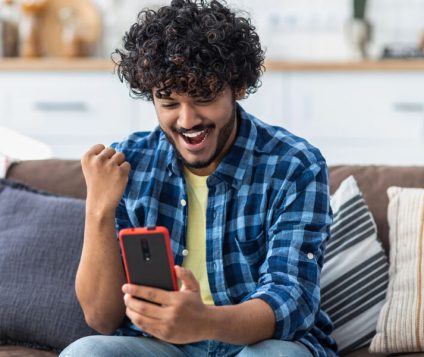Hyaluronic Acid: What it is, what it is for and benefits

These tissues are in good condition. However, in the aging process, it gradually begins to decrease, and as a result, the skin becomes saggy, loses its firmness and elasticity, and the dreaded wrinkles appear.
Aesthetic medicine has successfully used the properties of hyaluronic acid in different regenerative and trauma treatments and therapies. This article will show its applications and benefits.
What is hyaluronic acid?
It is found in almost all cells: in cartilage, bones, joints, in the eyes, and even in the gums. But the skin is its greatest reserve, containing 50% of all the hyaluronic acid present in the body.
In the joints, it is found in the synovial fluid of the intra-articular cavities and gives them viscosity. Therefore, it is a powerful ally in the prevention of joint damage.
It is currently used mainly in two different areas: cosmetics and aesthetics on the one hand and rehabilitation and traumatology on the other.
Functions of hyaluronic acid
Hyaluronic acid is generated inside the body and is responsible for important functions, including:
- The conservation of the hydration levels of the dermis. It provides an important regenerative effect on the skin, given its accumulation of water.
- It plays an important role in the epidermis. It serves to enhance the elasticity of the skin. It improves the hydration of the epidermis tissues and helps the formation of cartilage. It drives and accelerates the synthesis process carried out by the ribosomes of the cells to generate collagen.
- It is part of the synovial fluid that surrounds the joints. It protects it and performs a function similar to grease in gears. On the other hand, it serves as a cushion against any impact, preventing the bones from rubbing against each other.
- It is present in the tendons and ligaments. These structures that connect the muscle with the bone are made up of connective tissue where hyaluronic acid is found, giving them elasticity during movement.
What causes a lack of hyaluronic acid?
The aesthetic doctor Julio Bayón says: “Every day, the human body degrades and re-synthesizes approximately a third of all the hyaluronic acid it contains and, in addition, it is destroyed after 20-25 years”.
At 40 years of age, hyaluronic acid reserves exceed 50%, but after 60, only 10% of them remain. The causes of this are due to a mixture of internal and external factors: genetic, environmental, and the adopted lifestyle.
- Genetic factors. In adolescence, the estrogen level is high, the contour of the face is well defined, and the skin is smooth and elastic. Over the years, hormone levels and the number of cells that give volume to the skin decreased. The arrival of menopause accelerates this.
- Environmental factors. Prolonged exposure to sunlight causes the progressive degradation of hyaluronic acid and collagen in the skin.
- The lifestyle. Carrying a healthy lifestyle and eating habits affects the state of the skin. The consumption of nicotine and other tobacco chemicals decreases the properties of hyaluronic acid.
What symptoms does a lack of hyaluronic acid produce?
For the skin to be naturally hydrated, elastic, firm, and wrinkle-free, the body must continuously produce hyaluronic acid.
Certain factors such as solar radiation, tobacco, or lack of sleep, increase the production of free radicals. These, in turn, affect the decrease in hyaluronic acid and slow down its production. The damage that this causes does not take long. to become visible.
Among the evident symptoms are:
- The appearance of wrinkles.
- Skin dehydration.
- Tightness, thinning, and loss of density in the skin.
Benefits of hyaluronic acid
Many benefits are obtained from applying hyaluronic acid in aesthetics and medicine. These include the following:
- Maintains good hydration of the skin. It can hydrate even its deepest layers, helping to maintain its thickness, volume, and smoothness. Therefore, it is used to prevent or delay the appearance of wrinkles.
- Useful in the treatment of degenerative diseases of the joints. In diseases such as osteoarthritis, it is increasingly common to perform infiltrations of this substance to reduce pain and regenerate cartilage. Scientific studies have shown its effectiveness in relieving the symptoms of osteoarthritis.
- It has its applications in dentistry. It is used to improve healing, regenerate the gums and the oral mucosa. It is also used in the surgical treatment of temporomandibular joint dysfunction.
Uses of hyaluronic acid use
Hyaluronic acid is obtained by synthesis, which manages to penetrate the skin, mix with natural hyaluronic acid and promote the production of this substance and collagen formation. Among the forms of presentation of this substance are:
- Blisters. They have repaired and restructured action with an anti-wrinkle effect, increasing elasticity and cellular metabolism.
- Eye contour gel. These gels typically contain retinol, collagen, and hyaluronic acid and offer intense hydration and wrinkle reduction.
- Night cream They are based on collagen and hyaluronic acid and are used to treat the signs of aging.
- Intensive repair spray for the skin. They are often used to repair the skin and provide long-lasting hydration.
Preventive measures in the use of hyaluronic acid
Although hyaluronic acid supplements can provide many benefits, they are not recommended for use by people with certain health conditions, such as:
- People are taking drugs that affect blood coagulation.
- Those who are allergic to meat or eggs.
- Those with hemophilia.
- People who had an infection or skin disease near the affected joint.
- Pregnant and lactating women.
Definitely, before using any hyaluronic acid supplement, it is advisable to visit a doctor, as they can help identify possible risks.


















